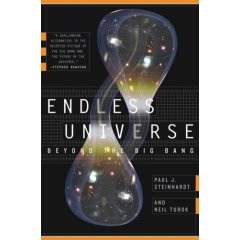
Here's Mateo's film about the eccentricities of the human eye. God I look old...
Conversations about science and culture


The authors inflict not a little serious damage on the Anthropic Principle. To an uninformed agnostic like myself, this is
aesthetically pleasing: the sight of physics running cap in hand to evolutionary biology for its metaphors has not been an edifying one. There are some very good AP-friendly accounts out there, of course. I think the last one I read was by Martin Rees (another able writer). Does AP still inspire a worthwhile literature these days?
Most accounts that claim to capture the 'special excitements ' of this or that scientific discipline degenerate pretty quickly into special pleading. Steinhardt and Turok manage it well. Anyone know of any others?
Over the holiday I read Richard Mabey's Beechcombings (Amazon UK), a fascinating and enjoyable book about which I may well have more to say, but which I currently wish simply to digest and to put into the context of some other current reading.
However, this passage from Edward Carpenter (mystical socialist and, wikilegedly, the man who introduced the sandal into Britain) that he quotes in a chapter called "Electric Beeches" struck such a chord of recognition with me that I thought I'd share it here, along with the passage in Eating the Sun it reminded me of:
It was a beech, standing somewhat isolated, and still leafless in quite early spring. Suddenly I was aware of its skyward-reaching arms and upturned fingertips, as if some vivid life (or electricity) was streaming through them into the spaces of heaven, and of its roots plunged into the earth and drawing the same energies from below. The day was quite still and there was no movement in the branches, but in that moment the tree was no longer a separate or separable organism, but a vast being ramifying far into space, sharing and uniting the life of earth and sky, and full of the most amazing activity.
-- Pagan and Christian Creeds, 1904
Now reverse the polarity:
Think of a beech tree in winter, its leaves lost, its architecture revealed in dark lines against cold grey cloud. Do what Robin Hill used to urge his children to do to cultivate the artist’s eye—take away the tree’s established “common sense” context by turning round, bending over and looking at it upside down through your legs. Its growth looks less like something pushed from the earth than it does something drawn from the sky. Its limbs, branches and twigs spread into the air like ink into blotting paper or cracks spreading through glass, embodying something between desire and transubstantiation.
The tree’s form tells the truth. The tree grows into the air because it grows out of the air. The bulk of the tree is not made from the soil beneath it—indeed, the soil is in large part made by the tree. Both soil and tree are made from carbon drawn from the sky above. Trees are built from sun and wind and rain. The land is just a place to stand.
-- Eating the Sun, 2007
"No longer a separable organism" strikes a strong chord with me, and "ramifying into space" always seems like a good idea. Most crucially, "Sharing and uniting the life of earth and sky", as Carpenter had it, is more or less what photosynthesis does, and as such what I set out to celebrate. But it does it by pumping celestial energies into the earth, not vice versa. As in electric circuits of a more mundane sort, the earth is the sink, not the source.
Beech tree picture from Treehugger, under a creative commons license. And while we're at it here are some more beeches from talented people on Flickr